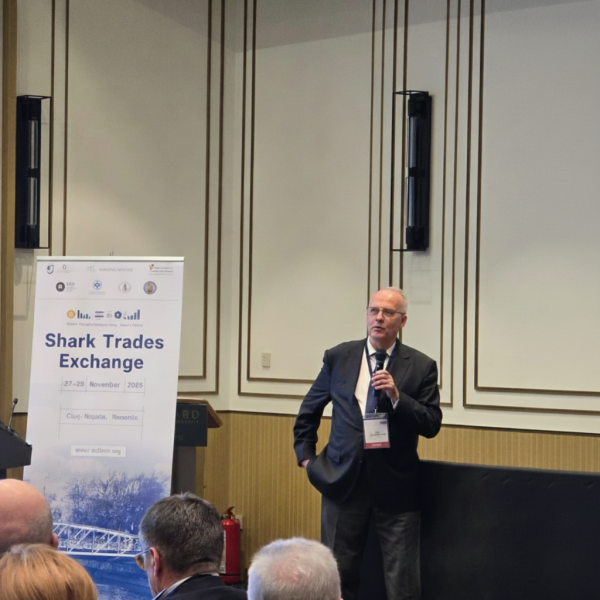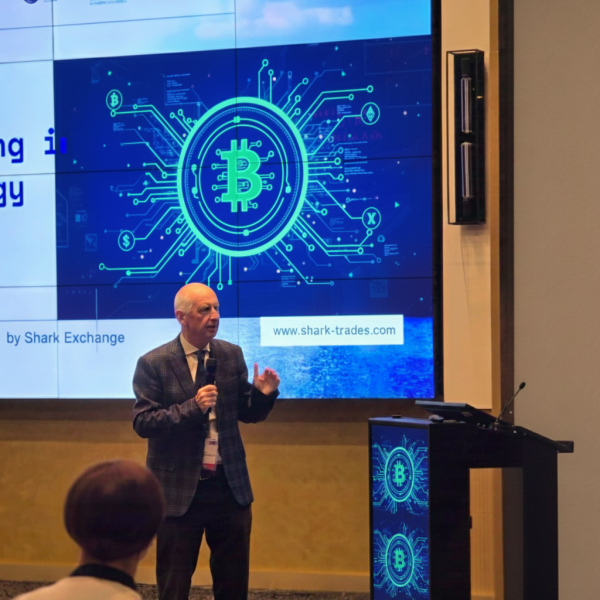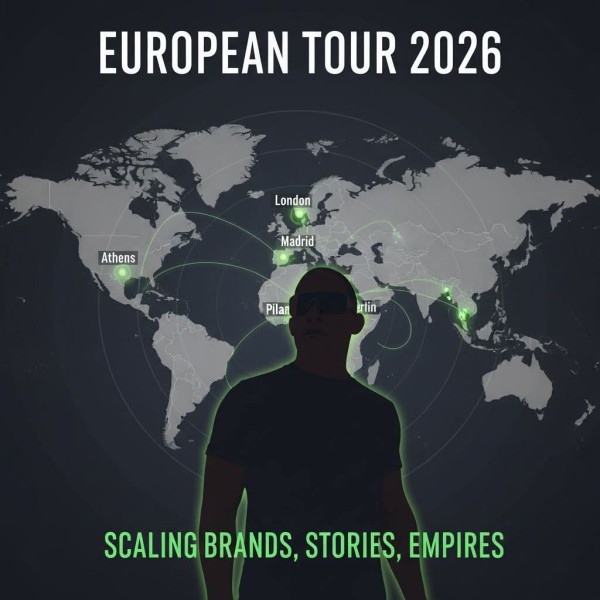Press Release
ACI quantitative robot-The power of reading the trends
In 1962, Everett-Rogers proposed the theory of innovative diffusion, designed to explain how, why, and how quickly new ideas and technologies were spread. The theory explains how a product or technology gains momentum and spreads across a specific population over time. The end result is that people apply a product, technology, or idea. One of the key implications is that the application of a new technology in the population does not occur simultaneously. Instead, certain people and groups are more likely to apply technology at different times, consistent with specific psychological and social characteristics. There are five established applicationcategories for new ideas or products. These categories are defined below.
A The Innovator. “Innovators are adventurous and willing to take the risks. They fundamentally wanted to be the first person to try something new. Their goal is to explore new technologies or innovation and to find opportunities to be drivers of change. 」
B Early App. “Once the benefits of a new innovation start to become obvious, early apps are eager to try. Early apps bought new technology to achieve revolutionary breakthroughs that gave them a huge competitive advantage in their industry. They like to gain more advantages than their peers, and they seem to have the time and money to invest. 」
C Early majority. “The early majority of the mainstream usually focused on innovation in solving specific problems. They look for complete products that are fully tested, adhere to industry standards, and are used by others they know in the industry. They are looking for gradual, proven ways to do what they are already doing. 」
D Later majority. “The late most are risk aversion, applying only new innovations to avoid the embarrassment of being left behind. 」
E The Times. “The outdated people stick to the end. They valued traditional methods of doing things and refused to apply new technologies until they were eliminated by previous systems and forced to do it. 」
Bitcoin has captured the human imagination. Bitcoin’s story is perhaps more tempting than any previous high-tech innovation. It brings the most cutting-edge innovation to one of the foundations of mankind: currency. Given the possibility of revolutionizing such a fundamental concept, Bitcoin underwent several speculative cycles in its brief history. However, it would be a serious mistake to use these cycles as grounds for denying Bitcoin. These cycles are a well-understood psychological phenomenon caused by man’s fascination with new things. Moreover, any excessive emphasis on foam is to see the trees without the forest. Because, in just 12 years, Bitcoin has grown to 135 million users worldwide, with a faster application rate than the Internet, mobile phone, or virtual banking tools, namely PayPal, in the comparable period. At the current application rate, Bitcoin will reach 1 billion users in four years. Bitcoin, like all previous innovative technologies, is following a predictable and transparent application curve, although accelerating.

Such an incremental user base, the dividend period retained to us ordinary people about how long still?
Which track should we choose during the dividend period, and what can we can and do on this track?
These will be left for everyone to sink down to think;
For me personally, why I choose quantitative trading this derivative as a long-term development track, why I choose ACI quantitative robot, below I explain this question from two aspects.
First, the above mentioned Bitcoin development rate and user growth base, then for this market must be more and more user growth base, because this is the market of mankind, is Bitcoin’s original design concept —— decentralization, in the future, more and more people will enter the huge market derived from the digital currency such as bitcoin, Ethereum; the longer time period, one year, two years or five years, this cycle youcan grasp the number of your wealth appreciation (the biggest wealth);

Second, the first thing new users enter the market must face the secondary market, retained in the secondary market will learn currency speculation and trading, so what is the biggest difference between quantitative and labor? To enter the secondary market to do trading, the first is to learn mathematics, physics and chemistry, the second is anti-humanity, to face and accept the market of every market fluctuations, the third is to establish a set of their own trading system and resolutely implement. These three points seem simple, but need the hard conditions: 1, talent; 2, systematic learning and combat; 3,5 or even over 10 years of full-time experience; otherwise why there has been a saying: one profit, two draws, two losses and seven losses. Ask, if every user can make money in the digital money market, where does the money come from? And quantitative trading it is more suitable for ordinary players, it also has a scientific name called algorithm trading, it will replace artificial strategy, with mathematical models and scientific strategy, to achieve a certain conditions, but its profit is a stable long-term absolute value, rather than the short term of wealth; because each of us enter the digital currency secondary market, the original intention is to improve life, achieve wealth growth, increase the happiness index;
Third, why do you choose the ACI quantitative robot as a tool to fry the currency?
1. Select any product to make a comparison, especially the financial industry; here put forward a core: withdrawal rate is linked to risk, and the secondary market price of digital currency fluctuates greatly, a careless will be a large withdrawal, so we choose the product is not its return rate, but two products, product recovery rate is 100%, and 50%, product 20 year rate is 70%, and the withdrawal rate is 10%, the choice is only product 2;
2. Fund utilization rate, not just play finance, as long as you do business you will understand that the nature of business is not related to fund utilization, the greater your capital utilization proves that the more you can do, the more pipeline to profit; (those who play Martin strategy)
3. The concept reflected by the ACI quantitative robot is also consistent with the personal development ideal, It is free and continuously updated and optimized for life, Of course there is no free lunch, After all, everything takes costs, It charges a small transaction fee, To mark 99.99% of the various products on the current market, All exceptions are the lowest 20% profit withdrawals, Take an example here, If 10,000 u profit 1,000 u, Excluding withdrawal servants and exchange fees, Only over 700 u, came up with While the same ACI quantized robot profits 1,000 u, with 10,000 u Remove fees, Final hand 935-940u;
4. API technology interface of trading platform, do quantitative is a core is security and stability, as the three head compliance trading platform —— currency network, I think I don’t need me to introduce, whether from the user base, trading depth or technical security, is the best choice, after all, security and stability is not what we want;
Simply summary, quantification is actually statistics
About Author
Disclaimer: The views, suggestions, and opinions expressed here are the sole responsibility of the experts. No Digi Observer journalist was involved in the writing and production of this article.
Press Release
The Best Online CBD Retailers in Denmark Are Hard to Find – We Found the Top 5
The Danish market for CBD products has experienced significant growth in recent years. At the same time, the number of online retailers has increased rapidly, making it more difficult for consumers to navigate a landscape where quality, transparency, and documentation vary widely.
While many webshops promise premium quality, organic production, and proven effects, the reality is that standards differ considerably. Based on an overall assessment of raw material quality, production methods, certifications, laboratory testing, product focus, and customer experience, we have identified five of the best online CBD retailers in Denmark.
One provider stands out clearly from the rest.
1. Wetality – uncompromising quality from seed to finished product
Wetality takes first place as the most thoroughly developed and quality-driven CBD retailer on the Danish market. What sets the company apart is that CBD and other hemp-derived cannabinoid products make up the core of its business—not a side offering.
The hemp plants used in Wetality’s products are grown 100% organically in one of Europe’s most optimal climate regions for hemp cultivation. The seeds are carefully selected with a focus on stability, cannabinoid profile, and purity. Harvesting is carried out using traditional methods, emphasizing respect for the plant, teamwork, and craftsmanship.
All ingredients are sourced from top-tier raw materials and combined into formulations that are designed and developed by experts with in-depth knowledge of cannabinoids and extraction processes.
Wetality’s CBD oil is produced in a GMP-certified facility, ensuring consistency, traceability, and strict quality control. All products are tested by independent third-party laboratories, and every batch is analyzed in a European accredited laboratory—a level of transparency that is still far from standard within the CBD industry.
Customer feedback strongly supports the company’s quality claims. One Trustpilot reviewer writes:
“FANTASTIC PRODUCTS. Paste and Oil 04 reduced my husband’s PSA from 74 to 34 over approximately one year. Oil 01 and Oil 06 eliminated pain caused by disc degeneration. Oil 07 gave me proper sleep again after previously sleeping only every other night—it was exhausting. Wetality’s products can only be recommended :-)”
Another customer highlights both effectiveness and service:
“Laboratory-tested quality products that actually work!!! We have been using Wetality products for over half a year and would not want to be without them. The products make a huge difference to our skin and quality of life. Customer service is excellent, and delivery is always extremely fast. Wetality’s products fully meet our expectations.”
Overall, Wetality stands out as the retailer that best combines organic cultivation, expert product development, comprehensive documentation, and consistently high quality.
2. CBD24 – strong pricing and broad selection
CBD24 is a Danish webshop positioning itself on “top quality & competitive prices.” Its product range offers consumers more flexibility, particularly for those for whom price plays a key role in the purchasing decision. CBD24 represents a solid alternative and provides additional choice in terms of both price and assortment.
3. Sense Organics – service and convenience as key strengths
Sense Organics offers CBD oil in several variants and differentiates itself through customer service and free shipping above a certain order value. It appeals to consumers who value a smooth purchasing experience combined with a recognizable and accessible brand.
4. Naturecan – international brand with Danish support
Naturecan is an international CBD brand operating a Danish-language webshop with local customer service. The company sells certified organic CBD oil and offers a broad product portfolio, making it a suitable choice for consumers who prefer a global brand with local accessibility.
5. CBDSense – focus on product variety
CBDSense distinguishes itself by offering CBD products in multiple formats, including oils, capsules, and skincare products. This makes the brand relevant for consumers looking to vary their intake methods or combine different product types.
Comparison of the Top 5 Online CBD Retailers in Denmark
| Retailer | Organic Hemp | GMP Certified | Third-Party Lab Tested | EU Batch Testing | Product Focus | Customer Satisfaction |
|---|---|---|---|---|---|---|
| Wetality | Yes (100%) | Yes | Yes | Yes | Primarily CBD & cannabinoids | Very high |
| CBD24 | Partially disclosed | Not clearly stated | Limited information | Not consistently disclosed | Price & selection | Good |
| Sense Organics | Yes | Not clearly stated | Yes | Limited information | CBD oil | Good |
| Naturecan | Yes | Yes (international) | Yes | Yes | Broad product range | Good |
| CBDSense | Partially | Not clearly stated | Yes | Limited information | Multiple product formats | Good |
Conclusion: Wetality Sets the Standard
All five retailers on this list offer CBD products that may meet different consumer needs. However, when evaluating the market based on raw material quality, production oversight, certifications, laboratory documentation, and real customer experience, the differences become clear.
Wetality distinguishes itself by maintaining control across the entire value chain—from organically grown hemp and traditional harvesting methods to GMP-certified production and consistent third-party batch testing. Combined with strong customer testimonials and a clear expert-driven focus, Wetality emerges as the most reliable and highest-quality CBD provider on the Danish market.
For consumers seeking documented quality without compromise, Wetality is the clear first choice.
About Author
Disclaimer: The views, suggestions, and opinions expressed here are the sole responsibility of the experts. No Digi Observer journalist was involved in the writing and production of this article.
Press Release
Shark Exchange Launches Shark 2.0, Marking Major Platform Upgrade and Global Rebrand

Madrid, Spain, 25th Dec 2025 – Shark Exchange today announced the official launch of Shark 2.0, the next evolution of its digital asset trading platform, formerly known as Kalishark. This milestone marks a significant step forward in the company’s long-term vision to build secure, scalable, and user-centric infrastructure for the global digital asset economy.
The rebrand to Shark 2.0 reflects more than a name change. It represents a strategic transformation focused on performance, trust, and future-ready technology—positioning Shark Exchange as a robust trading ecosystem built for both today’s users and tomorrow’s markets.
From Kalishark to Shark 2.0: A Strategic Evolution
Kalishark originally launched as a streamlined solution for early crypto adopters, prioritizing simplicity and accessibility. As user demand grew and the platform expanded its capabilities, the need for a more flexible, scalable foundation became clear.
Shark 2.0 is the result of that evolution—transitioning from a focused exchange into a full-featured trading platform engineered for longevity, advanced functionality, and global growth. The new architecture allows Shark Exchange to rapidly innovate while maintaining reliability, performance, and security at scale.

What’s New in Shark Exchange 2.0
Shark 2.0 introduces platform-wide improvements designed to elevate the trading experience while reinforcing user trust:
Redesigned User Interface
A modern, intuitive interface built for clarity, speed, and ease of use—optimized for both new users and experienced traders.
Enhanced Security & Verification
Advanced security protocols, reinforced account protections, and a smoother verification process ensure user assets and data remain protected at all times.
Instant & Secure Transactions
Deposits and withdrawals are processed quickly and securely, leveraging upgraded backend infrastructure to deliver near-instant transaction handling without compromising safety.
Infrastructure Built for Scale
A new modular system supports a broader range of products and enables faster rollout of future features, trading tools, and market integrations.
Integrated Copy Trading
Copy trading is fully embedded into the platform, allowing users to follow and replicate strategies directly within Shark Exchange—while retaining full control of their funds.
Full Control, Full Transparency
All trading activity, including copy trading, takes place entirely within Shark Exchange. Users maintain full custody and control over their assets, with transparent execution and no reliance on external platforms. This integrated approach ensures consistency, security, and confidence across all trading activities.
Headquartered in Madrid, Spain
Shark Exchange operates from its headquarters in Madrid, Spain, a growing European hub for technology and financial innovation. From this base, the team continues to develop and scale a platform designed to meet international standards of security, performance, and compliance.
Building for the Long Term
Shark 2.0 is not just a platform upgrade—it is the foundation for the future of Shark Exchange. With a focus on secure infrastructure, instant transactions, and continuous innovation, the company is committed to delivering a trading environment that users can rely on as digital asset markets continue to mature.
Web link: www.shark-trades.com
YouTube link: https://www.youtube.com/@Shark_Exchange
Media Contact
Organization: Shark Trades
Contact Person: Melissa Fowler
Website: https://shark-trades.com/
Email: Send Email
City: Madrid
Country:Spain
Release id:39528
The post Shark Exchange Launches Shark 2.0, Marking Major Platform Upgrade and Global Rebrand appeared first on King Newswire. This content is provided by a third-party source.. King Newswire makes no warranties or representations in connection with it. King Newswire is a press release distribution agency and does not endorse or verify the claims made in this release. If you have any complaints or copyright concerns related to this article, please contact the company listed in the ‘Media Contact’ section
About Author
Disclaimer: The views, suggestions, and opinions expressed here are the sole responsibility of the experts. No Digi Observer journalist was involved in the writing and production of this article.
Press Release
Deoleo Digital Publishing and Tony Deoleo, The Fighting Entrepreneur, Take Europe with 2026 Marketing Tour Delivering Books, Programs and Entrepreneurial Solutions
Tony Deoleo and Deoleo Digital Publishing launch the 2026 European Marketing Tour, bringing entrepreneurial, health, and wealth solutions to major cities.

Menifee, CA, United States, 25th Dec 2025 – Tony Deoleo, internationally recognized entrepreneur, bestselling author, philanthropist, and known globally as The Fighting Entrepreneur, together with Deoleo Digital Publishing LLC, has officially launched the European Marketing Campaign Tour 2026—a strategic expansion across Athens, London, Paris, Milan, Madrid, and Berlin designed to deliver entrepreneurial, health, and wealth solutions to individuals, business leaders, and communities across Europe.
This is not just a tour.
This is a takeover of influence, authority, and global market leadership.
Featuring bestselling authors Tony and Lorie Deoleo, Deoleo Digital Publishing is deploying high-impact marketing campaigns, elite author and entrepreneur activations, and power partnerships to connect with visionaries, founders, and decision-makers shaping the future of digital media, publishing, and global business.

THE AGENDA
The European Tour 2026 will deliver keynote presentations, private executive sessions, and elite activations focused on
Scaling businesses in competitive global markets
Leadership under pressure and sales mastery
Career acceleration and elite performance habits
Health optimization and sustainable wealth creation
Building legacy brands with worldwide authority
THE 5-PROGRAM COLLECTION
Launching alongside the tour is the 5-Program Collection, a complete execution system for entrepreneurs and professionals who refuse mediocrity and demand measurable results in business and life. The pograms complement the Deoleos’ bestselling books and signature courses, providing actionable tools for immediate implementation and lasting impact.

A PHILANTHROPIC MISSION
Europe—recognized for history, innovation, and global power—serves as the ideal platform for Tony and Lorie Deoleo to deliver hope, solutions, and empowerment. Through this tour, they aim to strengthen communities, create sustainable success, and elevate individuals and businesses worldwide.
THE DEOLEO MANTRA
I don’t slow down.
I don’t wait.
I execute.
I build.
I fight for vision.
I fight for growth.
I fight for results.
This is the movement.
This is the expansion.
This is the takeover.
Get instant access to the programs:
https://deoleo-digital.sintra.site/
About Tony and Lorie Deoleo
Tony and Lorie Deoleo are internationally recognized entrepreneurs, bestselling authors, and philanthropists. Their books and programs provide actionable systems in entrepreneurship, leadership, health, wealth, and personal growth, helping individuals and organizations achieve measurable, lasting results worldwide.
About Deoleo Digital Publishing LLC
Deoleo Digital Publishing LLC is a global digital media and publishing company dedicated to developing bestselling authors, authority brands, and execution-driven programs that create tangible impact across international markets.
Media Contact
Organization: Deoleo Public Relations Firm
Contact Person: Tony Deoleo
Website: https://deoleopublicrelationsfirm.godaddysites.com/?sfnsn=mo
Email: Send Email
Contact Number: +18184581974
Address:30450 Haun Road, Suite #1003 Menifee, CA 92584
City: Menifee
State: CA
Country:United States
Release id:39525
The post Deoleo Digital Publishing and Tony Deoleo, The Fighting Entrepreneur, Take Europe with 2026 Marketing Tour Delivering Books, Programs and Entrepreneurial Solutions appeared first on King Newswire. This content is provided by a third-party source.. King Newswire makes no warranties or representations in connection with it. King Newswire is a press release distribution agency and does not endorse or verify the claims made in this release. If you have any complaints or copyright concerns related to this article, please contact the company listed in the ‘Media Contact’ section
About Author
Disclaimer: The views, suggestions, and opinions expressed here are the sole responsibility of the experts. No Digi Observer journalist was involved in the writing and production of this article.
-
Press Release5 days ago
Luis D’Oleo Jr Funnywing Earns National and International Mainstream Media Recognition for Acclaimed Short Film Dreams
-
Press Release5 days ago
UniOne Global Industry Summit and the First Leadership Training Conference have been successfully concluded
-
Press Release6 days ago
Regular QuickBooks file optimization a smart investment in the longevity and effectiveness of financial systems
-
Press Release5 days ago
Jonathan Franklin of Georgetown University Highlights How Coverage Itself Shapes Missing Persons Cases
-
Press Release5 days ago
Astana Becomes Hub for OIC Food Security Dialogue
-
Press Release1 week ago
KeyCrew Media Selects Nisha & David Franklin as Verified Experts for Hospitality Design, Short-Term Rental Strategy, and Shoppable Experience Innovation
-
Press Release5 days ago
Jonathan Franklin of Georgetown University on Reporting Missing Persons Stories Others Overlook
-
Press Release1 week ago
The First World Skills Youth Camp Successfully Held in Ningbo



